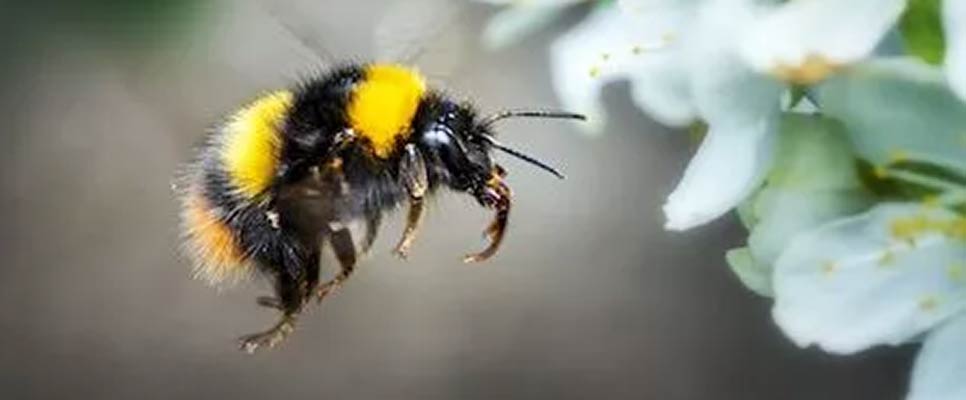Description:
A close relative of the well-known honeybee, bumblebees are big, hairy bees. The majority of bumblebee species inhabit colonies, but unlike honey bees or wasps, which can have colonies with up to many thousand members, bumblebee colonies typically only contain 50 to 150 members. Bumblebees are strong and hairy insects that are typically 1.5 to 2.5 cm (0.6 to 1 inch) in size and black with wide yellow or orange stripes. They frequently build their nests underground, usually in abandoned bird or rat nests. Because Bumble bee species are social bees, they live in structured communities. If you found this bee on your property you must hire a professional bee removal service to get rid of it.

Appearance:
Bumble bees range in size from one-quarter to one inch. They have fuzzy hairs coating their lanky bodies and are black or yellow. Their shiny, fuzz-free abdomen helps carpenter bees be recognized from them, which are frequently mistaken for them. Their wings come in two pairs. Bumblebees are strong and hairy insects that are typically 1.5 to 2.5 cm (0.6 to 1 inch) in size and black with wide yellow or orange stripes. They frequently build their nests underground, usually in abandoned bird or rat nests. Because Bumble bee species are social bees, they live in structured communities.
Life Cycle:
After waking from hibernation in the spring, the queen bee will select a nesting location. She creates a mound out of wax created by her and pollen to lay its eggs in. For several days, up until the eggs hatch into larvae, the queen remains in the nest or vibrates to maintain the eggs warm. For almost two weeks, the tiny, grub-like larvae will eat pollen and nectar that the queen has collected. Later, they create a cocoon where they can grow into adult bees.
The season’s first brood gives rise to female worker bees. A queen bee will stay within the hive for the remainder of the season and lay hundreds of eggs once these larvae have developed. New queens and male bees will hatch from different broods, and they will leave the hive to find new colonies. Late in the summer, the young queens will mate before feeding intensively in preparation for hibernation. The male bees depart from the nest to mate with a different queen. After the season, this old queen and her nest will disappear.
Habits:
Every day of the year, bumble bees are active, and in the early spring and late summer, they are typically the first and last bees to emerge. They can stop 10 to 18 blooms in a minute. Just enough honey is produced by them to keep the colony alive during times of food shortage. When their seasonal colonies die off in the winter, only the queens survive until spring.
Bumble bees fly through the air by sweeping their wings downward like the majority of bees do. Bumble bees typically fly at a speed of 3 meters per second. Some experts liken the flying of the bee to that of a swimmer moving through water because of the bee’s little weight.
Published on: November 14, 2023
Last updated on: December 14, 2023
